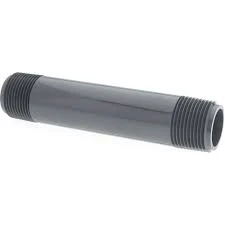-
Cangzhou Yulong Steel Co., Ltd.
-
Phone:
+86 13303177267 -
Email:
admin@ylsteelfittings.com
- English
- Arabic
- Italian
- Spanish
- Portuguese
- German
- kazakh
- Persian
- Greek
- French
- Russian
- Polish
- Thai
- Indonesian
- Vietnamese
- Zulu
- Korean
- Uzbek
- Hindi
- Serbian
- Malay
- Ukrainian
- Gujarati
- Haitian Creole
- hausa
- hawaiian
- Hebrew
- Miao
- Hungarian
- Icelandic
- igbo
- irish
- Japanese
- Javanese
- Kannada
- Khmer
- Rwandese
- Afrikaans
- Albanian
- Amharic
- Armenian
- Azerbaijani
- Basque
- Belarusian
- Bengali
- Bosnian
- Bulgarian
- Catalan
- Cebuano
- China
- China (Taiwan)
- Corsican
- Croatian
- Czech
- Danish
- Esperanto
- Estonian
- Finnish
- Frisian
- Galician
- Georgian
- Kurdish
- Kyrgyz
- Lao
- Latin
- Latvian
- Lithuanian
- Luxembourgish
- Macedonian
- Malgashi
- Malayalam
- Maltese
- Maori
- Marathi
- Mongolian
- Myanmar
- Nepali
- Norwegian
- Norwegian
- Occitan
- Pashto
- Dutch
- Punjabi
- Romanian
- Samoan
- Scottish Gaelic
- Sesotho
- Shona
- Sindhi
- Sinhala
- Slovak
- Slovenian
- Somali
- Sundanese
- Swahili
- Swedish
- Tagalog
- Tajik
- Tamil
- Tatar
- Telugu
- Turkish
- Turkmen
- Urdu
- Uighur
- Welsh
- Bantu
- Yiddish
- Yoruba

Oct . 08, 2024 18:08 Back to list
DIN Flange Size Specifications and Dimensional Standards for Various Applications
Understanding DIN Flange Dimensions A Comprehensive Overview
Flanges are crucial components in piping systems, serving as the interface between sections of pipe, valves, pumps, and other equipment. Among various standards for flange dimensions, the DIN (Deutsches Institut für Normung) specifications are widely recognized, particularly in Europe. This article aims to provide a comprehensive overview of DIN flange dimensions, helping professionals in the industry make informed decisions.
Understanding DIN Flange Dimensions A Comprehensive Overview
One of the critical aspects of DIN flange dimensions is the nominal diameter. This is used to match flanges with piping systems and is usually expressed in millimeters (mm). The standard sizes range, for example, from DN10 (10 mm in diameter) to DN1200 (1200 mm in diameter). Each nominal size corresponds to a specified pressure rating, classified under the PN (Pressure Nominal) system, such as PN6, PN10, PN16, etc. Higher PN ratings indicate flanges that can withstand greater pressures.
din flange dimensions

When discussing thickness, it’s essential to consider the pressure class of the flange. The thickness of a flange will vary according to its classification. For example, a PN16 flange will have a different thickness than a PN40 flange at the same nominal diameter. It’s crucial for engineers and designers to select the right flange thickness based on the intended application, ensuring safety and reliability in the system.
Additionally, the bolt hole pattern and size are dictated by the DIN standards, which help facilitate the proper sealing and connection between flanges. Common bolt hole configurations are specified within the standards, with a defined number of bolts, hole diameters, and bolt circle dimensions. This standardization is vital for ensuring compatibility across various components and suppliers.
The materials used for DIN flanges play a significant role in their performance, with options ranging from carbon steel and stainless steel to various alloys. It’s important to choose materials based on the specific fluid media, temperature, and environmental conditions to prevent corrosion and failure.
In conclusion, understanding DIN flange dimensions is essential for anyone involved in piping systems. Familiarity with the standards, including the nominal diameter, pressure ratings, thickness, bolt patterns, and materials, will enable engineers and project managers to select the appropriate flanges for their applications. Proper flange selection not only ensures the efficiency of the system but also enhances safety and longevity in operations. As industries continue to evolve, the significance of adhering to established standards like DIN will remain paramount in optimizing system performance and reliability.
Latest news
-
ANSI 150P SS304 SO FLANGE
NewsFeb.14,2025
-
ASTM A333GR6 STEEL PIPE
NewsJan.20,2025
-
ANSI B16.5 WELDING NECK FLANGE
NewsJan.15,2026
-
ANSI B16.5 SLIP-ON FLANGE
NewsApr.19,2024
-
SABS 1123 FLANGE
NewsJan.15,2025
-
DIN86044 PLATE FLANGE
NewsApr.19,2024
-
DIN2527 BLIND FLANGE
NewsApr.12,2024
-
JIS B2311 Butt-Welding Fittings LR/SR 45°/90° /180°Seamless/Weld
NewsApr.23,2024











